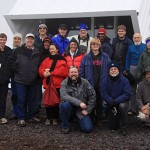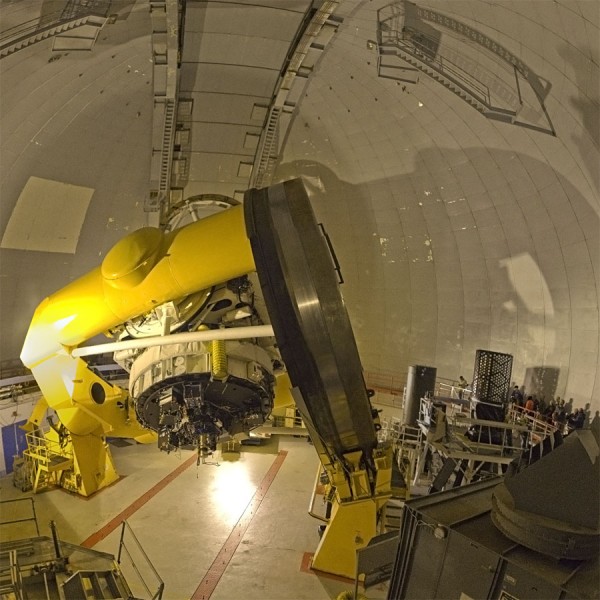
Postcard from the Summit – Weather Tower

When you want to see the stars, find someplace dark

There are few opportunities to visit most of the telescopes on Mauna Kea. Only two of the thirteen telescopes maintain any sort of regular public access. Keck opens a viewing gallery during business hours on weekdays and to the MKVIS weekend tours. Subaru provides interior tours, but only with advance reservations. Visiting inside any of the other telescopes is normally not open to the general public, but can be arranged with some work.
Thanks to the work of a few individuals the West Hawai’i Astronomy Club arranged tours of both Gemini and CFHT. Marc Baril was kind enough to arrange the CFHT tour, setting up staff and transportation for the visit. This included a pair of CFHT 4WD vehicles taking folks from Waimea to the summit. Many thanks are owed to Joy Pollard who set up the Gemini portion of the tour. Weekend tours are not normally arranged, but Joy managed to put together the needed staff to allow us to visit the telescope on a Saturday. The result was a couple great tours of these facilities.

The weather was pretty awful, winter weather closing in on the summit for the last couple weeks. We arrived at the summit to encounter patchy snow, dense fog and a bitter chill. This would not be an opportunity to enjoy the stunning vistas or sunset that the summit of Mauna Kea is renowned for, we could barely see the next telescope, much less the sunset. At least the road was open to the public and our tour could go on.
We convened in the control room of the Gemini telescope. Here our guides, Joy and Sonny, explained the operation of the telescope and how the operators controlled everything through the night. Our tour of Gemini ran a bit longer than the scheduled hour. During that hour we toured the control room, the coating facility, and the telescope itself.

A few levels below the main dome floor is the coating facility. This is where the telescope mirror receives a new reflective surface very few years. For a single piece eight meter primary, a vacuum chamber slightly larger is required. The large chamber makes it seem as if there is a flying saucer docked in the lower bay of the telescope building. The many viewing ports and vacuum lines simply adding to the impression.

Again we visited the coating facility, complete with the massive cranes and the vacuum chamber needed to coat mirrors up to three and a half meters in diameter. This facility is also used by the IRTF and UKIRT observatories to coat the primary mirrors for those telescopes. A treat for me was visiting the OHANA interferometer test lab in the coudé room below the telescope. A project I knew a fair amount about, but had never seen.
The tour finally arrived at the telescope itself. The large equatorial design is such a contrast to the alt-azimuth designs of the more modern designs of Gemini, Subaru and Keck. The enormous steel horseshoe and yoke represent a classic design used for large telescopes throughout the 20th century. We wandered about the dome floor, learning about the details of the telescope, the drives, and the instruments. The AO system was scheduled for the night and was mounted to the telescope. While the massive MegaCam prime focus camera was sitting to the side of the telescope.
The hoped for view of sunset from the upper balcony of the CFHT telescope was nothing to write about. Clouds obscuring all but a hint of sunset’s colors. The final treat was instead an opportunity to ride the rotating dome while the telescope slewed. The show highlighted this big machine, a testament to the people who build and operate these telescopes to push the boundaries of human knowledge deep into the universe.
These tours take a fair amount of work to put together, but are very much worth it. I expect we will do another tour in the spring. Perhaps do a couple of the radio telescopes? CSO, JCMT or SMA? Personally I have never had a chance to properly appreciate the sub-millimeter observatories on the summit. CSO is due to be dismantled in a couple years, it would be a good time to visit this groundbreaking facility.
